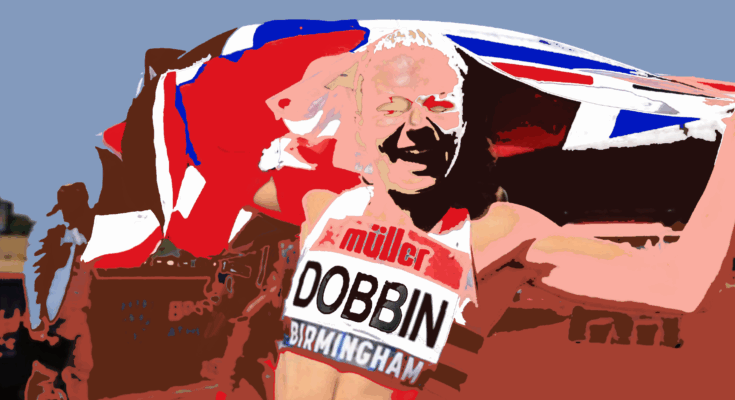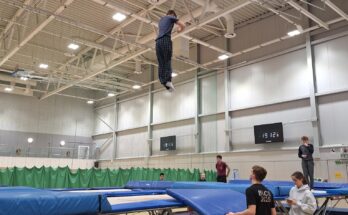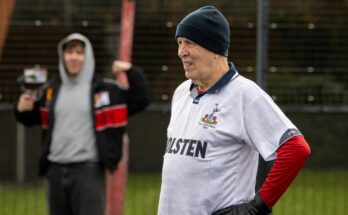“HOW it felt on the inside was like I was dying.”
A 13-year-old girl awoke, loosely, on the floor whilst at school. There is confusion, memory loss, and evidence of urinary incontinence. After two days of irregular incidences of uncontrollable hand curling and neck movements, a significant tonic-clonic seizure suddenly occurred. Whilst the eventual 15 to 20-minute episode happened, she fell in and out of consciousness as best friends, classmates and teachers watched with confusion, fear and panic.
Who and where is she now?
Beth Dobbin is a British sprinter, and the Scottish record holder for the 200m (a record she has beaten four times) with a time of 22.59 seconds. She is a two-time European Team Championships winner and was a bronze medalist in the 2022 Commonwealth Games in Birmingham, as part of the 4x400m women’s relay team. In 2021, she became an Olympian as she competed in Tokyo for Team GB.
Tonic-clonic seizures: a type of generalized seizure that produces bilateral, convulsive tonic and clonic muscle contractions.
“I felt very much not in control, and I remember things in front of me just fading away and thinking, this must be me dying,” Dobbin said.
Tonic-clonic seizures are the current stereotypical image of what epilepsy is, that and the cause being flashing light, which is actually only true for 3% of all epileptics.
“I think it looked scary for people around me to see as I remember seeing a lot of panicked expressions before I passed out.”
Due to the severity of her seizure, Dobbin was fortunately able to be diagnosed with epilepsy promptly. However, whether consciousness returns after 20 minutes or 20 hours, the post-ictal effects can be extreme and prolonged. The brain is of course the most complex organ in the human body and has more than just one category of health: the physical, the chemical, the developmental, and the mental, for example. Epilepsy can have different triggers for different people, some internal and some external, so different treatments and medications can be prescribed by neurologists.

Dobbin was prescribed Tegretol, which decreases nerve impulses that lead to seizures, and is also used for neuropathic pain. Its most common side effects include fatigue, nausea, headaches, dry mouth, and weight gain (NHS UK).
The impact it all had on her athletics was immediately noticeable: “I was a lot more lethargic after the first seizure. I had less energy, and performance and race times were considerably down. I also lost a lot of confidence and felt worried and insecure.
“My medication made me a lot slower as a sprinter, which worried me, but it also provided a safety net knowing that they prevented me from having further seizures.”
Dobbin said to Women’s Health magazine in 2024: “taking the medication long term can affect your kidneys. I weaned myself off it over a good few months – it’s a really gradual process and it wasn’t easy. So, physically I felt a lot better, but mentally, I was crippled by anxiety for two or three years.”
The sprinter has previously been candid about one of the unseen sides of epilepsy – mental health. She used EMDR (desensitisation and reprocessing via lateral eye movements and talk therapy) and CBT (talking therapy that aims to change thinking and behavioural patterns) to combat the effects of anxiety and post-traumatic stress disorder.
To Women’s Health, she also said: “I’d think random things like, ‘if you eat that you’re going to have a seizure’. It was so obsessive. When it came to my epilepsy experience, the worst part wasn’t the seizure, but the effects on your mental health.”
Epilepsy Society says: “Mental health issues such as anxiety and depression are common in people with epilepsy. In some cases, there may be links between a person’s epilepsy and mental health.”

“Like I was dying.” Unfortunately, it is not an exaggeration. Statistics from SUDEP Action say that (per year in the UK) over 100,000 emergency hospital admissions are a result of epilepsy, and between 2004 and 2014, deaths relating to epilepsy rose to 69%.
Considering everything that had and could happen, was quitting athletics ever on the table for her?
“Honestly, no. I did doubt whether I would be any good at it but if anything, it helped me get through the tough times having something to focus on that I loved.”
Dobbin now works with Epilepsy Action, Epilepsy Society and Epilepsy Scotland for children & young people. Both her track and personal accomplishments make her an ideal ambassador.
“My advice to a young epileptic athlete would be to surround yourself with a good support system to help you through the difficult times.
“Also, know the importance of the basics such as sleep, hygiene, good nutrition, and look after your well-being. Anything that can help you feel a bit better in yourself will be beneficial.”
This feature is part of a collection, titled: Non-visible disabilities in mainstream sport
Feature 1: El Reid | On The Ground
Feature 3: Elinor Barker | Stay On Track
Feature 4: Matt Graves | Still Human
Feature 5: Emma Whitlock | Mind Minefield



